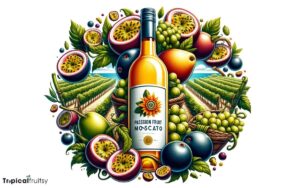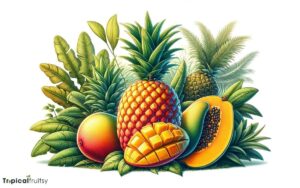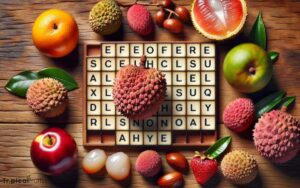Tropical Tree Fruit Can Reach 80 Lbs: Explained!
The jackfruit is the largest tree-borne fruit in the world, with some specimens weighing up to 80 pounds. Other substantial tropical fruits include the cempedak, durian, and the African baobab’s fruit.
Tropical regions are home to a vast array of tree fruits that are notable for their size and weight.
Among them:
Handling these fruits requires special considerations due to their weight and size. Massive tropical fruits like jackfruit and durian demand specialized handling from harvest to market.
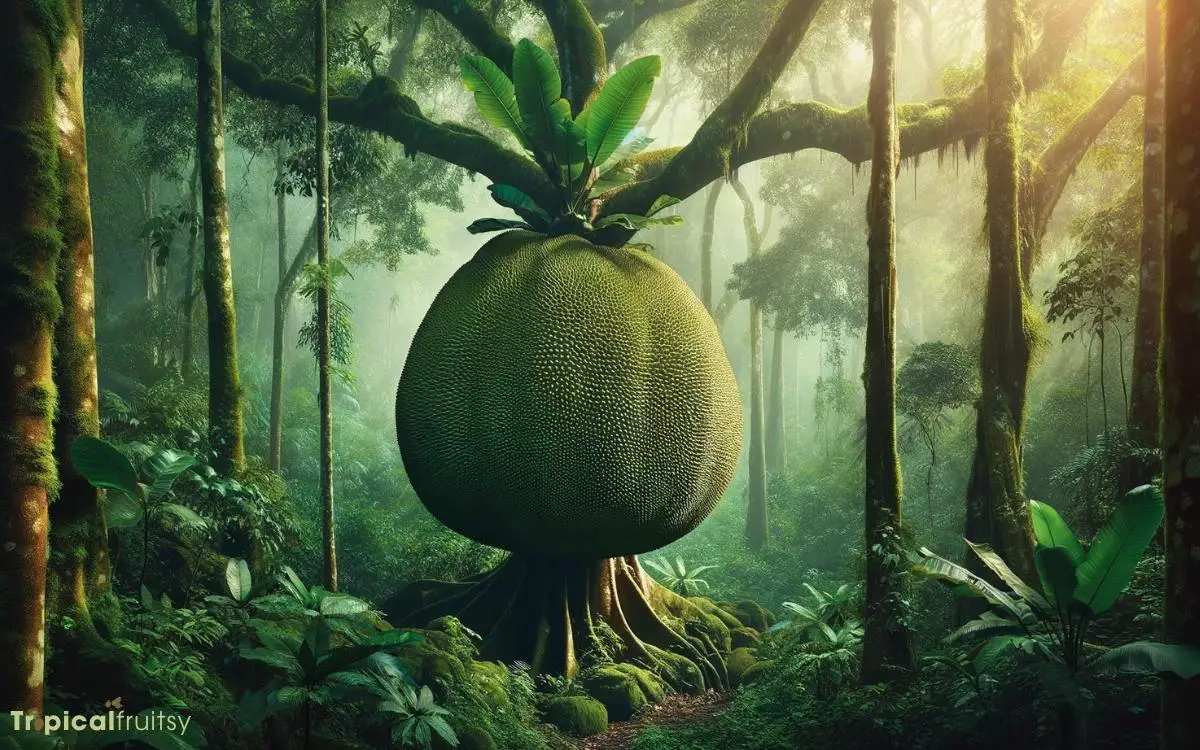
Key Takeaway
4 Unique Fruits: Maximum Weight, Region of Origin, and Characteristics
| Fruit Name | Maximum Weight | Region of Origin | Notable Characteristics |
|---|---|---|---|
| Jackfruit | 80 lbs | South Asia | Largest tree-borne fruit, fibrous flesh, sweet taste |
| Cempedak | 20 lbs | Southeast Asia | Similar to jackfruit, smaller with a sweet flavor |
| Durian | 7 lbs | Southeast Asia | Strong odor, spiky husk, creamy texture |
| African baobab | 3 lbs | Africa | Nutritious, dry pulp, hard shell |
The Jackfruit: A Behemoth
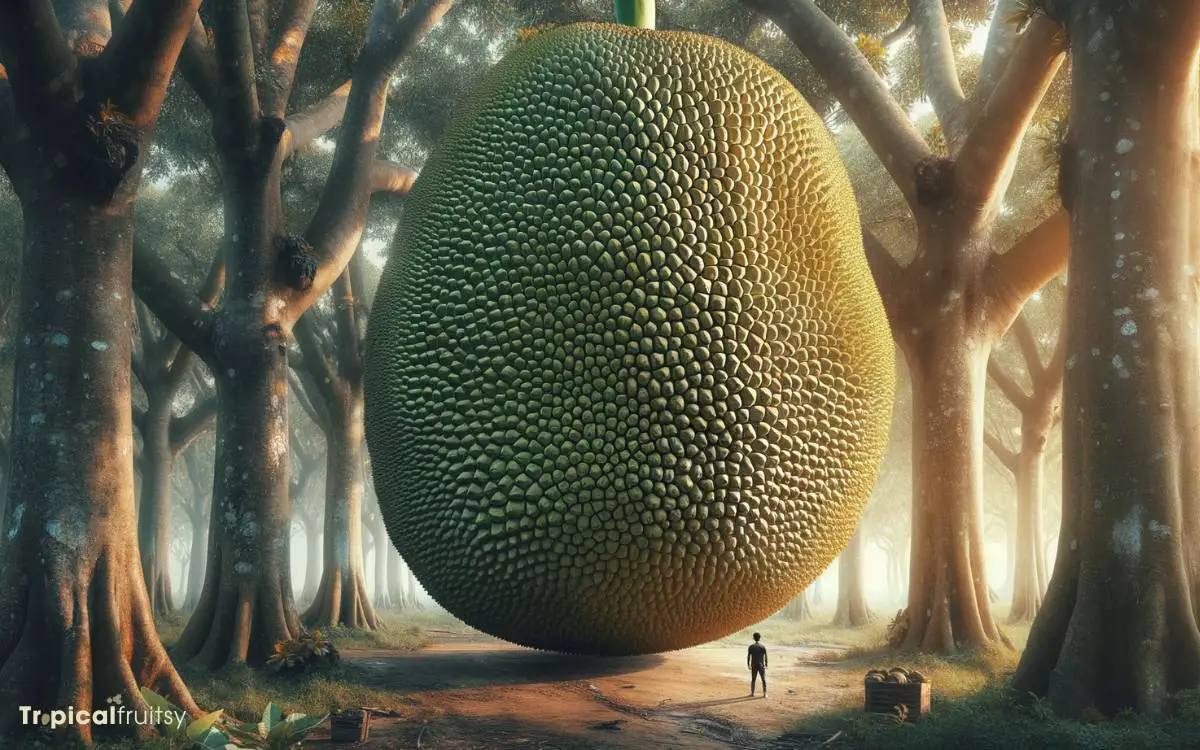
The jackfruit, known for being the largest tree-borne fruit, can weigh up to 80 pounds and is a staple in tropical regions around the world.
Botanically classified as Artocarpus heterophyllus, the jackfruit is a species of tree in the fig, mulberry, and breadfruit family (Moraceae). Its prodigious size is not merely an outlier; it is a characteristic feature of the species.
The fruit’s fibrous flesh, rich in vitamin C, dietary fiber, and other nutrients, makes it a valuable food source. Additionally, it contains compounds exhibiting antioxidant properties.
Agriculturists have documented its cultivation in India for millennia, and it has since diversified across other tropical climates.
The jackfruit’s adaptability and nutritional profile underscore its potential in addressing food security in regions susceptible to climate variability.
Durian: The Controversial Giant

Durian, often referred to as the ‘king of fruits,’ elicits strong reactions due to its pungent aroma and hefty size, with specimens occasionally weighing over 7 pounds.
The biological and chemical composition of durian contributes to its distinctive characteristics:
- The fruit’s outer husk is covered with formidable spikes, providing a natural defense mechanism against predators.
- Rich in sulphur-containing compounds, the aroma of durian can be detected from several yards away, an aspect that either appeals to or repels potential consumers.
- Durian’s flesh contains a unique combination of soft, creamy texture and complex flavor notes, ranging from sweet to savory.
- Nutritionally, it is dense with calories and essential nutrients, including vitamin C, potassium, and dietary fiber.
As the debate around durian’s sensory impact continues, another tropical fruit, the cempedak, shares a lineage with the famed jackfruit.
Cempedak: Jackfruit’s Cousin
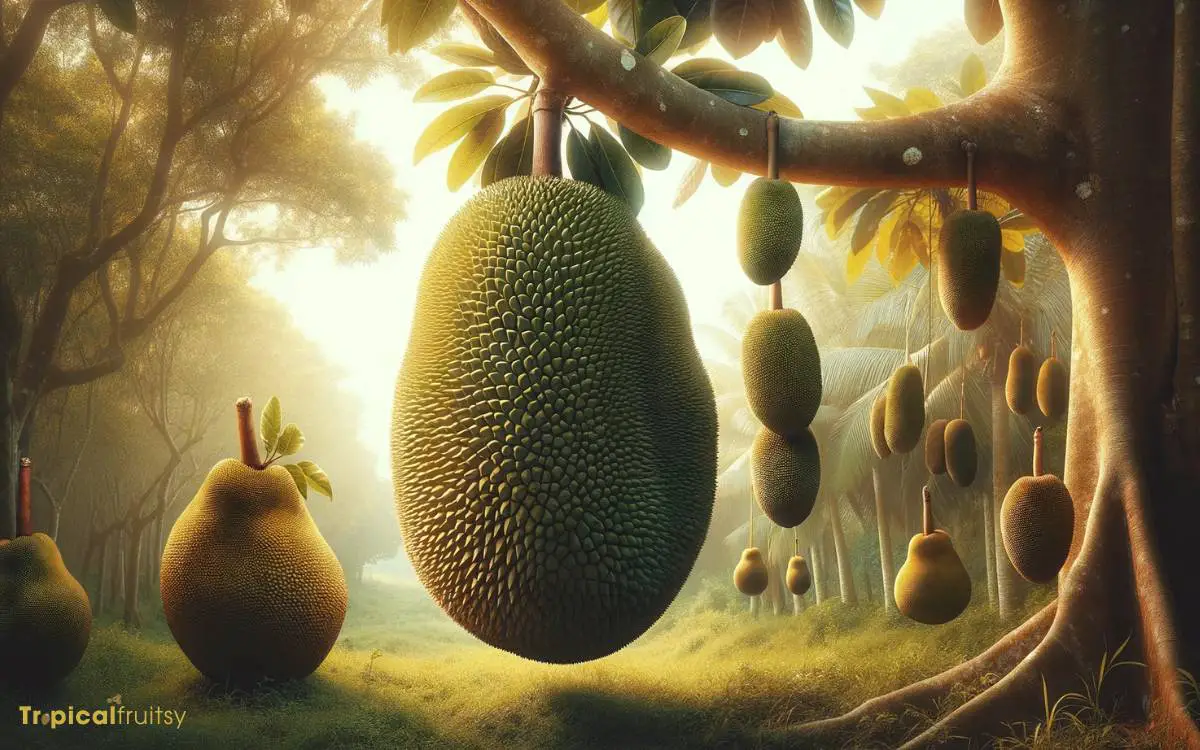
Cempedak (Artocarpus integer), a lesser-known relative of the jackfruit, presents a unique flavor profile that distinguishes it within the Moraceae family.
Although similar in appearance, cempedak is generally smaller than jackfruit, with a typical mass that is significantly less than the 80 lb upper limit observed in its cousin.
Indigenous to Southeast Asia, cempedak is cultivated and revered for its culinary versatility and aromatic fruit quality.
Distinctive Flavor Profile
Cempedak, a relative of the colossal jackfruit, boasts a complex flavor profile that is both sweet and musky, with hints of honey and banana.
As botanists and culinary experts explore the sensory attributes of this tropical fruit, they describe its taste as a unique amalgamation of familiar flavors.
The following olfactory and gustatory characteristics are often noted:
- A sweet, pervasive aroma reminiscent of ripe bananas and honey.
- Subtle undertones of musk, adding depth to the fruit’s fragrance.
- The initial taste notes are often compared to juicy, sweet bananas.
- A honeyed richness that lingers on the palate, enhancing the overall sensory experience.
Chemical analysis reveals the presence of esters and terpenes, which contribute to cempedak’s distinctive flavor and aromatic properties.
Smaller Than Jackfruit
How does cempedak compare to its larger cousin, the jackfruit, in terms of size and physical characteristics?
Cempedak (Artocarpus integer), though related to the colossal jackfruit (Artocarpus heterophyllus), exhibits a notably smaller stature.
Typical cempedak fruit ranges between 10 to 15 kg (22 to 33 lbs) in weight, while the jackfruit can attain a mass of up to 36 kg (80 lbs).
Morphologically, cempedak fruit presents a cylindrical shape with a less spiky and softer exterior compared to the robust, prickly surface of jackfruit.
The rind of cempedak is thinner and its arils edible flesh around the seeds are more easily accessible, thus differentiating it from its bulkier relative.
This distinction in size and texture is significant for consumers and cultivators, influencing harvest, culinary applications, and marketability.
Southeast Asian Origin
Originating from the lush rainforests of Southeast Asia, cempedak shares its lineage with the more widely known jackfruit, demonstrating a rich cultural and botanical heritage in the region.
The cempedak tree (Artocarpus integer) is treasured for its substantial fruit, which is not only a dietary staple but also an embodiment of the diverse ecosystems where it thrives.
To create a vivid image of its origins:
- Towering evergreens, dripping with moisture from the dense, humid air.
- A cacophony of tropical birds, punctuating the thick foliage with bursts of color and sound.
- Layers of undergrowth, teeming with a myriad of insects and small fauna.
- The pervasive scent of ripe fruit, mingling with the earthy notes of the forest floor.
This description aligns with the scientific understanding of cempedak’s native environment, an ecological niche where this species has adapted and flourished over millennia.
African Baobab Fruit

The African Baobab fruit, derived from Adansonia digitata, presents a unique nutritional profile rich in vitamin C, dietary fiber, and antioxidants.
Traditional harvesting practices of this fruit involve manual collection from both wild and cultivated trees, which is critical for the sustainability of this species.
The fruit’s pulp and seeds are utilized in various culinary applications, ranging from direct consumption to incorporation into beverages and food products, reflecting its versatility and cultural significance.
Nutritional Profile
African Baobab fruit, known for its substantial weight, also boasts a dense nutritional profile rich in vitamin C, dietary fiber, and antioxidants.
The fruit’s unique biochemistry has been the subject of numerous studies, highlighting its potential health benefits.
Its composition is remarkable for its synergistic blend of micronutrients and phytochemicals, which contribute to its overall nutritional value.
The following list provides a quantitative snapshot of its key nutritional components:
- Vitamin C: Approximately 280 mg per 100g of pulp, contributing to immune system support and skin health.
- Dietary Fiber: Roughly 44g per 100g, aiding in digestive health and satiety.
- Antioxidants: High levels of polyphenols, which combat oxidative stress.
- Minerals: Contains significant amounts of calcium, potassium, and magnesium, essential for bone health and metabolic functions.
The African Baobab fruit’s robust nutrient profile underscores its potential as a functional food in both local and global contexts.
Harvesting Practices
Baobab fruit collection, a labor-intensive process, involves climbers ascending the massive trees to handpick the ripe gourds, ensuring sustainable practices are upheld to protect the tree’s longevity and ecosystem.
The methodology employed is critical to mitigate the impact on the baobab’s habitat, as indiscriminate harvesting can lead to a reduction in the tree’s reproductive capacity and a decline in genetic diversity.
Climbers are typically trained to identify the optimal stage of fruit maturity, which is paramount to maximizing the nutritional value and taste profile of the harvested product.
The process is meticulously monitored, often by community-led cooperatives, to maintain an ecological equilibrium.
This ensures that the baobab, often an integral part of the local ecosystem, continues to thrive while providing economic benefits to the indigenous communities.
Culinary Uses
Although often overlooked in Western cuisine, the African baobab fruit is a versatile ingredient utilized in an array of traditional African dishes, ranging from nutritious beverages to tangy preserves.
The fruit’s unique properties lend themselves to various culinary applications:
- Nutrient-Rich Powders: The dehydrated pulp can be ground into a fine powder, rich in vitamin C, calcium, and prebiotic dietary fibers, enhancing smoothies or fortifying baked goods.
- Refreshing Beverages: Soaking the tangy pulp in water results in a vitamin-packed drink, often sweetened with natural sugars or honey.
- Jams and Preserves: High pectin content allows the fruit to be used as a natural thickener for jams, contributing to the preservation of seasonal flavors.
- Savory Sauces: A component in sauces and condiments, the fruit imparts an acidic profile that complements the umami of various dishes.
Transitioning from the multifaceted uses of African baobab fruit, we delve into the culinary potentials of another tropical heavyweight: the ponderous pumpkins of the tropics.
Ponderous Pumpkins of the Tropics

Many tropical fruits, such as the jackfruit, can grow to immense sizes, with some specimens weighing up to 80 pounds.
The jackfruit’s considerable mass is due to its complex structure of multiple fruiting bodies that merge into a single, contiguous fruit.
This phenomenon, known as syncarpy, results from the coalescence of numerous ovaries from the same flower.
The fruit’s growth pattern is determinate, with size limited by genetic and environmental factors, including nutrient availability and climatic conditions conducive to its development.
This characteristic size is not merely a biological curiosity but has implications for the logistics of cultivation, harvest, transport, and commercialization.
Understanding the growth dynamics of such large fruits is essential for optimizing agricultural practices and ensuring the viability of these crops in local and global markets.
Is Cherry a Type of Tropical Tree Fruit?
Yes, cherry is a type of tropical fruit. It belongs to the genus Prunus and is native to the temperate regions of the Northern Hemisphere. Cherries are often used in desserts, jams, and beverages due to their sweet and tart flavor. Additionally, they are a good source of antioxidants and vitamins.
Harvesting and Handling Challenges

The substantial weight of tropical fruits like the jackfruit poses significant challenges in harvesting and logistical operations.
These challenges necessitate methodical planning and the adoption of specialized techniques to ensure the integrity of the fruit and safety of the harvesters.
To elucidate:
- Physical Support: Due to their size, fruit must be carefully supported during detachment to prevent damage from abrupt falls.
- Mechanical Assistance: Equipment such as cranes or harnesses may be required to safely lower the fruit to the ground.
- Post-Harvest Handling: The fruit’s bulk demands robust containers for transport to prevent bruising and maintain quality.
- Worker Safety: Protocols must be in place to protect laborers from injuries due to the fruit’s heft and potential falls from height.
Conclusion
The prodigious fruits of the tropics, such as the gargantuan jackfruit, the polarizing durian, the lesser-known cempedak, the ancient baobab, and the colossal tropical pumpkins, present formidable challenges in harvesting and handling.
These botanical titans, with their awe-inspiring weights and sizes, are marvels of the plant kingdom, reflecting nature’s remarkable capacity to push the boundaries of fruit growth.
Simultaneously, they also test human ingenuity in agricultural management and logistics.


